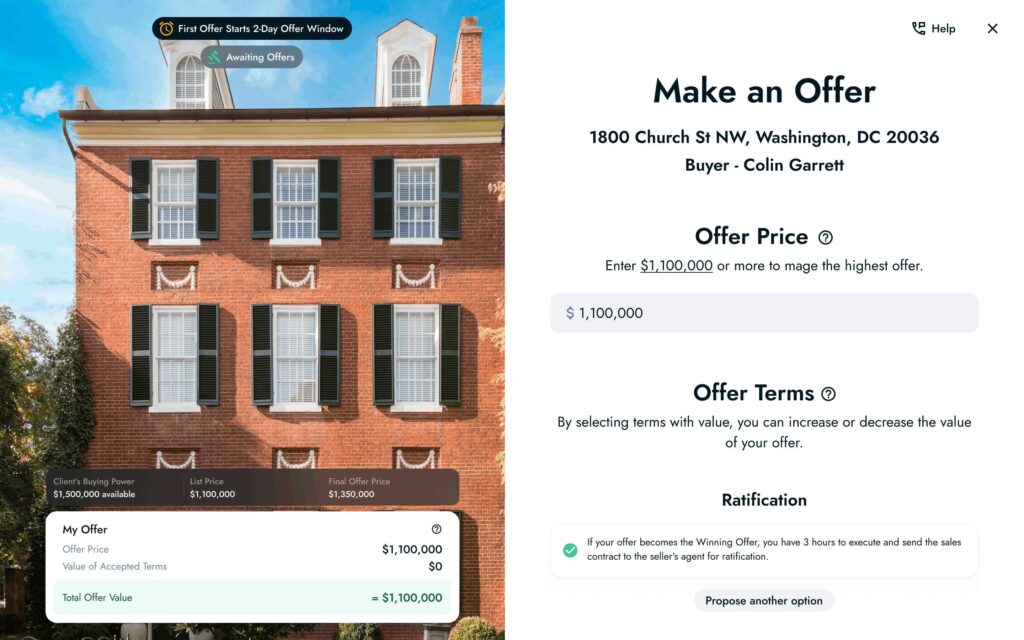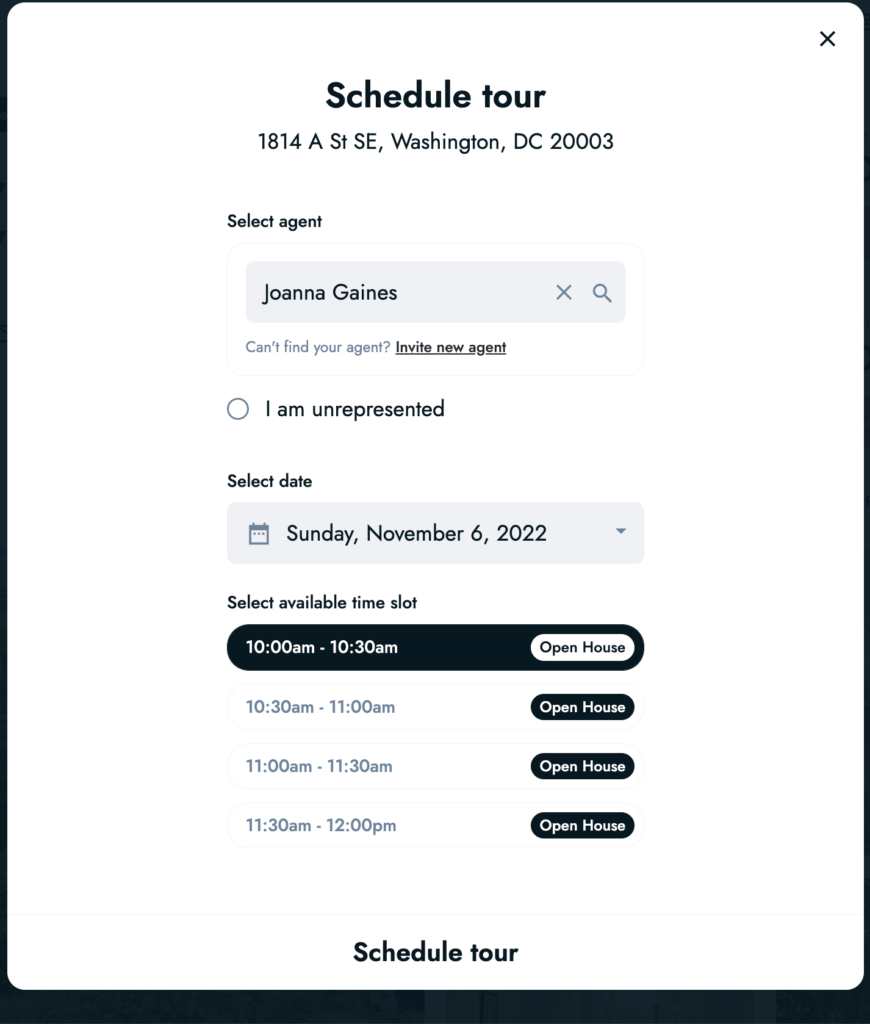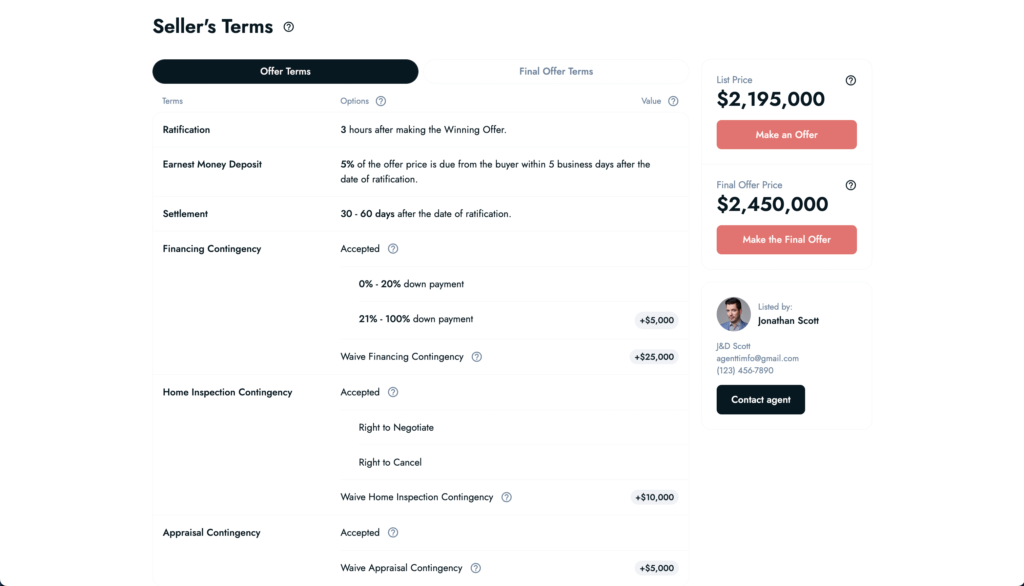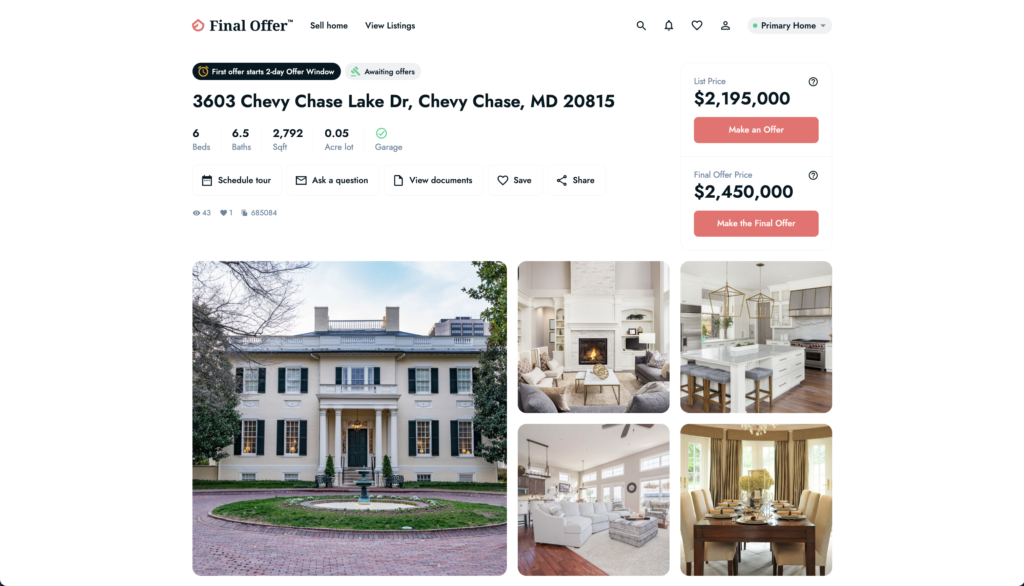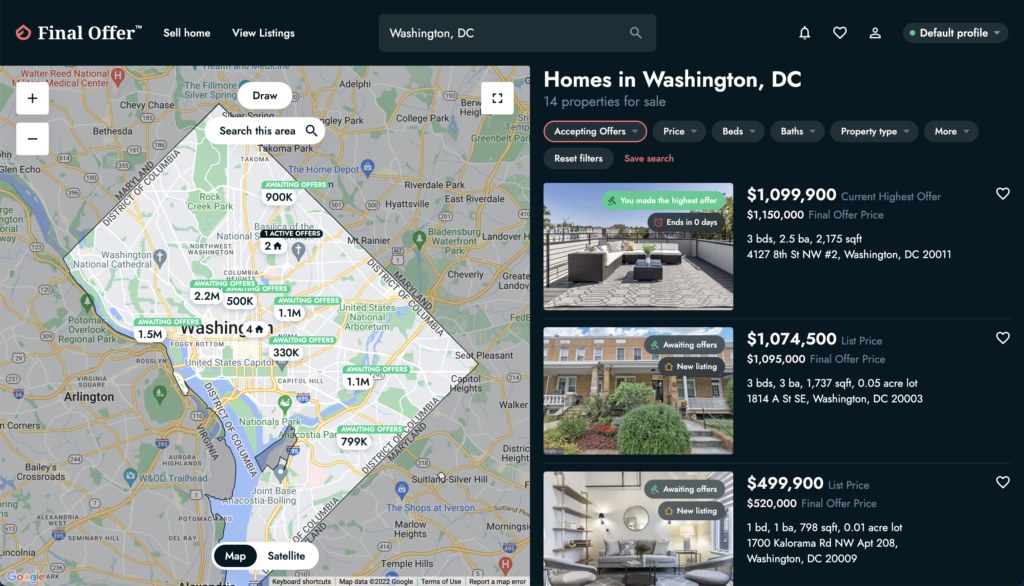Are you receiving Inman’s Agent Edge? Make sure you’re subscribed here for the latest on real estate technology from Inman’s expert Craig Rowe.
Final Offer is a listing marketing and open offer management solution.
Platforms: Browser, iOS
Ideal for: Listing agents, buyer agents and their clients
Top selling points:
- Transparent offer presentation
- Seller control
- Shrinks offer period
- Buyer qualification features
- In-app communications
- Hard values applied to offer terms
Top concern:
Primarily, the education of the mass market on why being transparent as possible through the offer process is best for all parties, especially buyers and sellers.
What you should know
Final Offer is a way for sellers and buyers to sell and buy in less time. Ultimately a listing platform, the software publicizes homes for sale, provides search functionality, and looks and functions better than a traditional portal. Its ultimate differentiator is that it publishes two prices alongside each listing, the List Price and the Final Offer, the latter being the price and terms a seller will take to sign a contract that day and pull the home from the market.
It’s Amazon’s Buy Now button for real estate. Buyers and their agents need to fully register, buyers need to be financially qualified and all parties must agree to the unique deal structure in writing. Beyond that, Final Offer is a well-designed, smart and unique value proposition for buyers and sellers.
Unless law or a buyer prohibits it, there’s no reason to be secretive about offers. It’s antiquated and frankly, tiresome. Your buyer either wants to buy the home, or they don’t.
Yes, every deal needs to work for all parties and protections need to exist, but that doesn’t require an extensive, covert back and forth. There’s no reason a listing agent can’t tell the selling agent the number and terms they need to hit to get it done. After all, time kills deals, so the faster parties can arrive at an agreement the better. This is why I loved the emergence of solutions like Doorsey and MarketBuy, and now, Final Offer.
Final Offer is less than a month old as of this writing, but it comes off as much more operationally mature and technically sound, a testament to its founding team’s collective technology company leadership and real estate sales expertise.
Overall, it presents an Apple-inspired, minimalist user interface, with a less-is-more visual aesthetic, even in its detailed listing pages, offer submission workflow and onboarding experiences.
There’s a wide range of clever, worthwhile features supporting the product’s core competency, such as a simple, narrative-driven offer submission process that works alongside a DocuSign integration, immediate offer-submission alerts to all parties, including previously interested buyers, the allowance of all visual media types in listing pages, tour scheduling and management, detailed offer history timelines and a buyer qualification feature.
First, know that Final Offer functions much like a portal does. Agents post their sellers’ homes and buyers go looking for them.
The listing detail pages look great, and allow for 3D tour content, map verification, floorplans and plenty of supporting visual marketing tools.
Users can schedule a tour, save a home, share it and most importantly, find the seller’s preferred terms, listed along with the home’s bedrooms, baths and breakfast nooks.
Both prices, the list and final, are available alongside the primary details.
Sellers do more than post a number, though. The terms are there, too. Closing date, all contingencies, inspection periods and any special addenda are clearly also posted for buyers to consider before offering.
Any non-final offers submitted trigger an alert to any interested buyer to invite them back into the fold. And because they know the terms of the submitted offer, it becomes clear what it will take to remain in the game.
The map search function works the same way. Buyers can save a geographic zone and be notified when offers are made on homes within it.
Buyers complete an additional disclosure form when registering to submit an offer that binds them to their deal within the confines of the software, and need to submit a credit card as insurance against bailing. (The company’s terms of use don’t supersede state laws.) Final Offer also mandates sellers agree to their final published terms, so it’s not only buyers who are on the hook.
Buyers can upload a formal prequalification letter or use the Guaranteed Rate integration to register.
When assembling an offer, the software connects a hard value to each term. For example, the closing date selection calendar applies a dollar amount to each day. The faster you close, the more value an offer has. The same is done for contingencies. A buyer may not reach a price the seller wants, but an offer with more favorable terms gets automatically elevated in the public timeline, again clearly displaying for everyone what it takes to get the deal over the finish line.
This offer approach is also highly beneficial for agents, as it eliminates the client’s ability to challenge an agent’s offer advice — because the writing couldn’t be more clearly etched into the wall. Think about how much time you waste reluctantly submitting garbage offers because, fiduciary obligations aside, buyers simply won’t listen.
Accepted offers have a set time frame in which they need to be ratified within the platform, typically 24 hours.
Listing agents can log in to track activity on each listing or active transaction, and chat in-app with others in the deal.
Another feature empowers agents to negotiate entirely within Final Offer, eliminating the need to allow critical deal data to spread into email, text threads and voicemails. The communication is sharply threaded into each listing’s profile alongside the current offer timeline. It’s really well done.
Final Offer works somewhat differently than its closest colleagues, Doorsey and MarketBuy. There’s no time limit or hybrid auction model, and buyers can’t see the dollar amount being offered, but they can see proof of other offers. Best of all, they can see exactly what the seller will take that day to wrap up the deal.
But what all of these products do is help sellers gain control of the sales process. It gives them a sense of order and structure to the sale, they know better what to expect and should see fewer offers not worth their time. It also gives buyers more market intelligence, helping them understand clearly where they stand amongst their competition. All the automation, features and coding may differ, but the value propositions here is undeniable.
Yes, I’m enamored by the idea of increased offer transparency. I want all of these companies to keep growing.
This is how I learned to sell real estate, and I maintain that the best form of salesmanship is honesty. Go ahead, point out the chipped paint, dated cabinets and driveway cracks. Most importantly, elbow out the tire-kickers as soon as possible. There’s no real pride in collecting bad offers. Be honest with sellers, too.
This is why I love that Inspectify wants to build multi-party trust in homebuying by creating a national standard for pre-offer inspections, which can cease the absurd practice of negotiating a deal twice, one of the primary reasons for deal friction.
These sorts of solutions are what the painfully overused word “disrupt” should be reserved for, because they fundamentally change for the better how the industry carries out its business.
But, will Final Offer ultimately change the industry? Likely not. But it could.
What it will do is attract smart agents and sophisticated sellers that don’t have time to entertain the tedium of old-school, Greatest Generation real estate sales tactics. Enough games.
“Here’s what I’m selling. Here are my terms. I’m open to negotiating, but not to having my time wasted. You want to buy it or not?”
This is proptech as it’s meant to be: Upsetting to some, eye-opening to others. Well done.
Have a technology product you would like to discuss? Email Craig Rowe
Craig C. Rowe started in commercial real estate at the dawn of the dot-com boom, helping an array of commercial real estate companies fortify their online presence and analyze internal software decisions. He now helps agents with technology decisions and marketing through reviewing software and tech for Inman.


